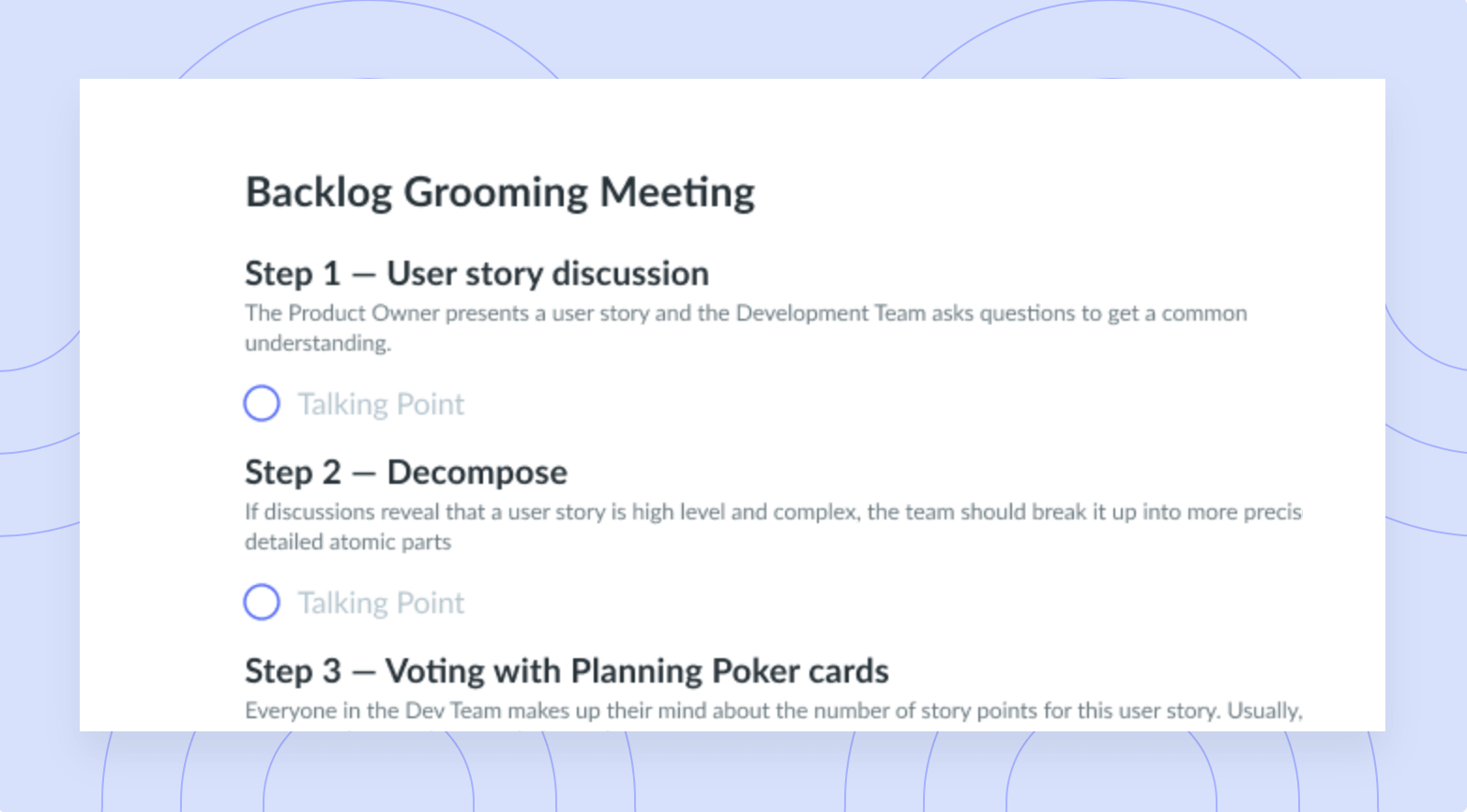
Decision-Making Meeting Agenda Template
Get this templateStimulate group participation, share concerns, and create momentum for the next steps with this template by Rick Lent (author of Leading Great Meetings).
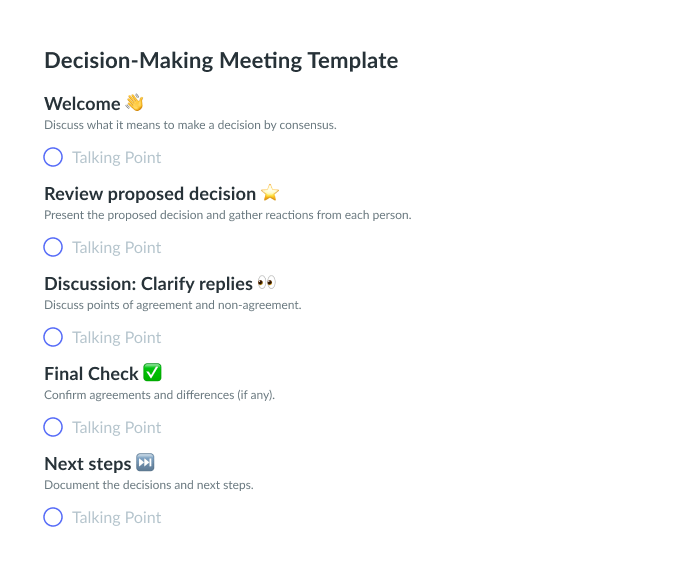

Decision-making meeting agenda template overview
What is decision making?
Decision making in a workplace context refers to the process of deciding between a course of action to maximize profitability or achieve the desired outcome. In business, these decisions can be made by one person or a collective team or group of shareholders. In the workplace, decisions are often formalized during decision-making meetings in which colleagues gather to decide upon the best course of action. These meetings intend to gather a group to formally agree on a decision so the organization can move forward as a collective. The end goal should be to garner a firm commitment to act on the decision.
Why are decision-making meetings important?
The decision-making process is not an easy one, so decision-making meetings are beneficial. These meetings provide the perfect environment for colleagues to gather, converse, and ultimately move forward as a united front. While the frequency of these meetings will vary, it’s important to host decision-making meetings only when necessary. These meetings are key when a decision must be rendered and thus aren’t otherwise necessary.
The decision-making process varies from team to team, meaning it’s important to take an individualized approach so you can create a process that works best for your team. While the process looks different for everyone, it may include group activities like gathering information and conducting research, brainstorming, evaluating options and alternatives, raking preferences, or even hosting a vote to draw the final conclusion.
How long and frequent should decision-making meetings be?
The length of your decision-making meeting will also vary depending on your unique needs. When determining how long you need for your decision-making meeting, it’s best to leverage a decision-making meeting agenda template. Leveraging a decision-making meeting agenda template will ensure you don’t leave out any crucial details while simultaneously making sure you allot enough time to each talking point. After you’ve filled out your decision-making meeting agenda template and factored in time for questions and a discussion, you’ll be able to determine exactly how much time you need for your decision-making meeting.
What’s inside this Decision-Making Meeting Template:
The key to a successful decision-making meeting is leveraging a thorough decision-making meeting agenda template. Luckily, our decision-making meeting agenda template includes everything you need to host an efficient decision-making meeting, with 5 sections: welcome, review proposed decision, discussion: clarify replies, final check, and next steps.
1Welcome 👋
Discuss what it means to make a decision by consensus.
This part of the decision-making meeting agenda template is meant to be used to discuss what it means to make a decision by consensus. It’s important to use this section to align meeting attendees and ensure they’re informed and on the same page. They need to understand that their opinions matter, and you should encourage everyone to participate in the final consensus.
2Review proposed decision ⭐
Present the proposed decision and gather reactions from each person.
This section is where you’ll dive into the details and present the proposed decision. It’s important that everybody in attendance has the opportunity to express their concerns or opinions during this section so each member feels as though their opinion has been heard and considered. Use this time to discuss the pros and cons and get granular on how this decision will impact the organization.
3Discussion: Clarify replies 👀
Discuss points of agreement and non-agreement.
This part of the decision-making meeting agenda template is where you’ll discuss all proposed points of agreement and disagreement. It’s important that you use this time to host a healthy discussion where meeting participants have the opportunity to come to a general consensus together. Make sure you allocate enough time to your discussion so everyone in attendance has the opportunity to participate in the conversation.
4Final Check ✅
Confirm agreements and differences (if any).
The final check is when you and the other attendees will come to an agreement. You can use this time to discuss your options and draw a final conclusion. Remember, it’s important that everyone has an equal opportunity to vote on the final decision, and it’s equally important that everyone has all the information they need to make an informed decision.
5Next steps ⏭
Document the decisions and next steps.
Every good meeting ends with a next steps section and your decision-making meeting should be no different. During this time, it’s important to document the decision that has been made in addition to any next steps that need to be completed once the meeting has ended. Discussing and documenting next steps will ensure everyone is on the same page while simultaneously making sure that those who have committed to a post-meeting task remain accountable.



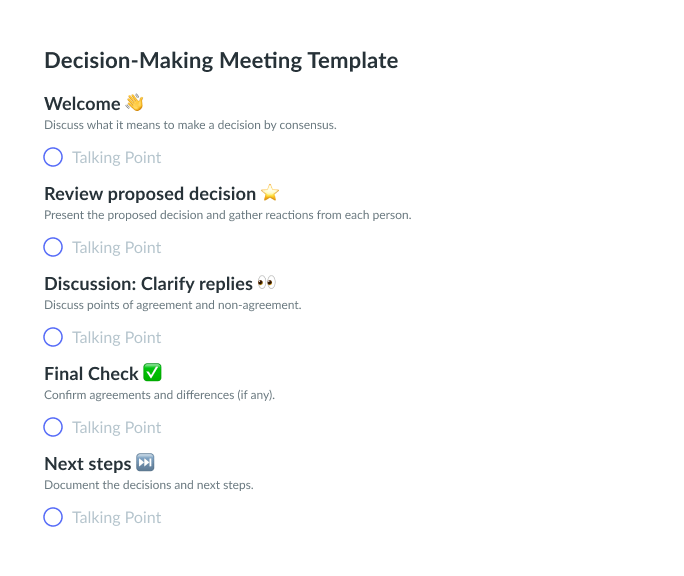







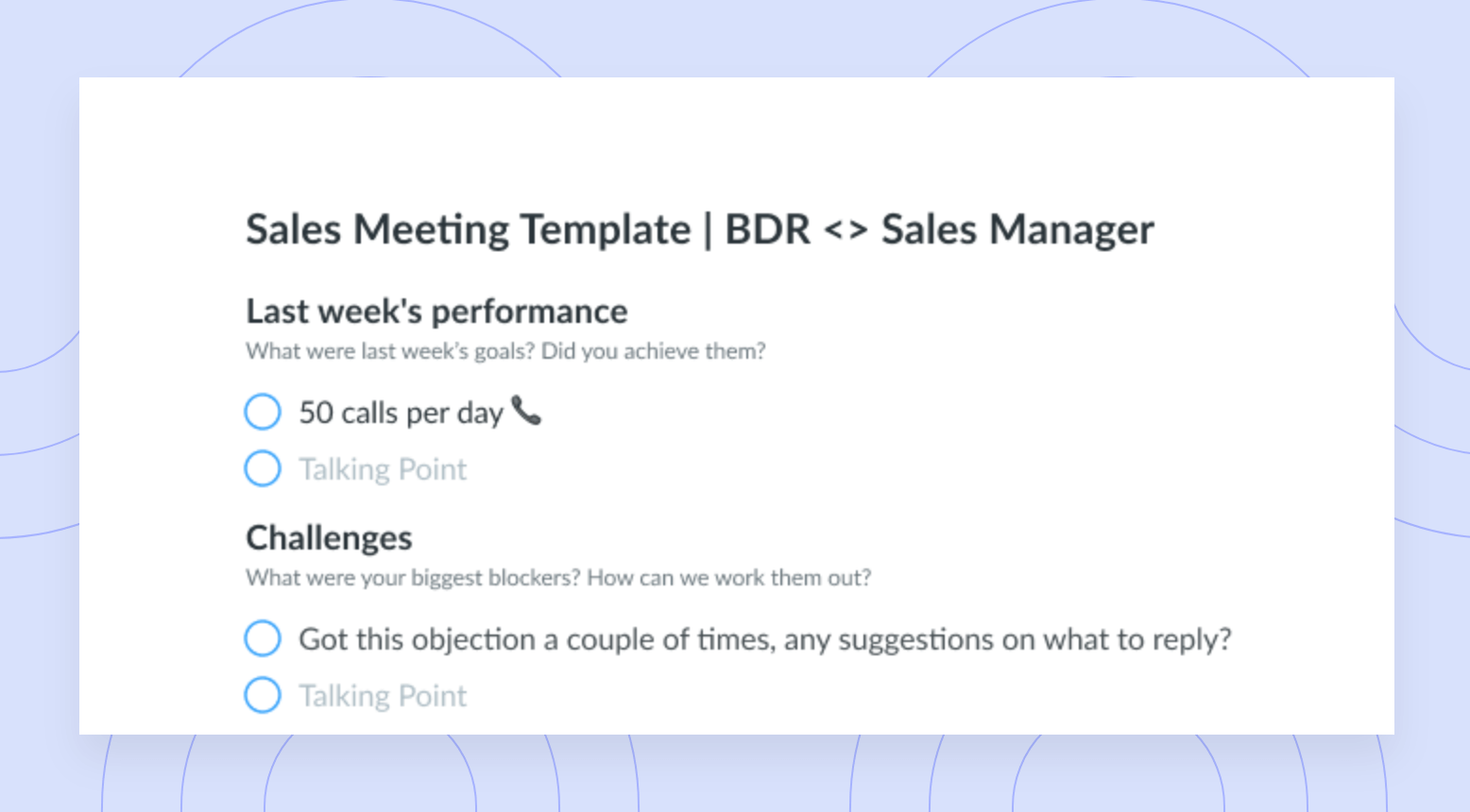
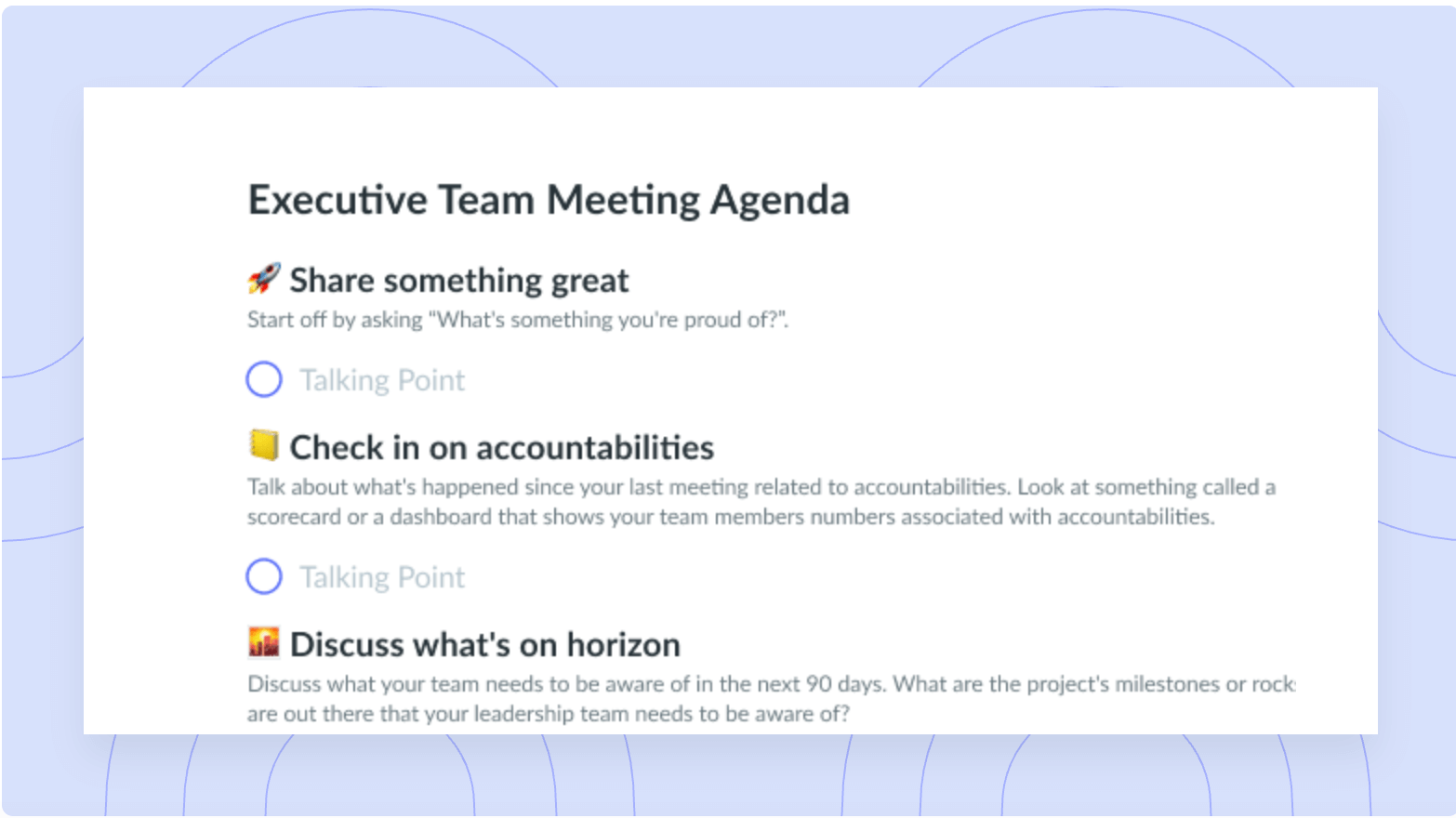
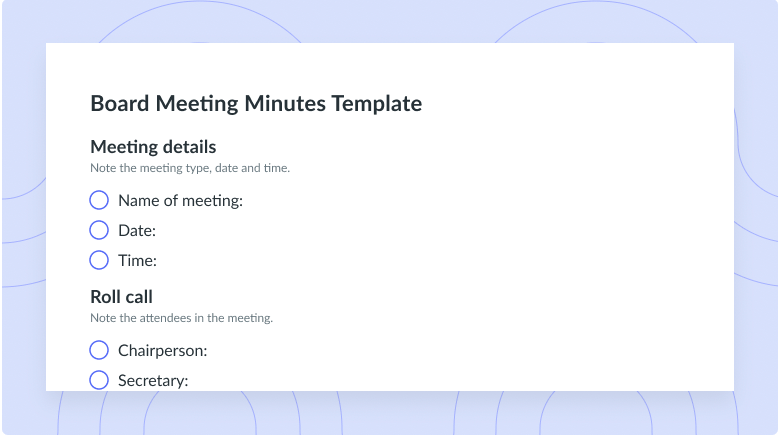
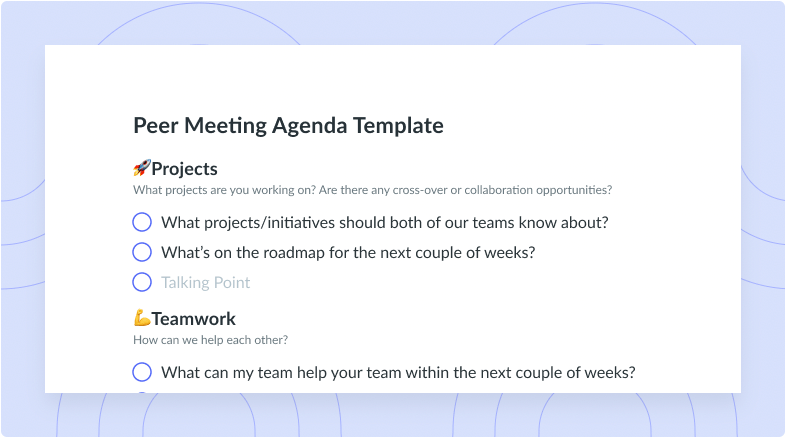
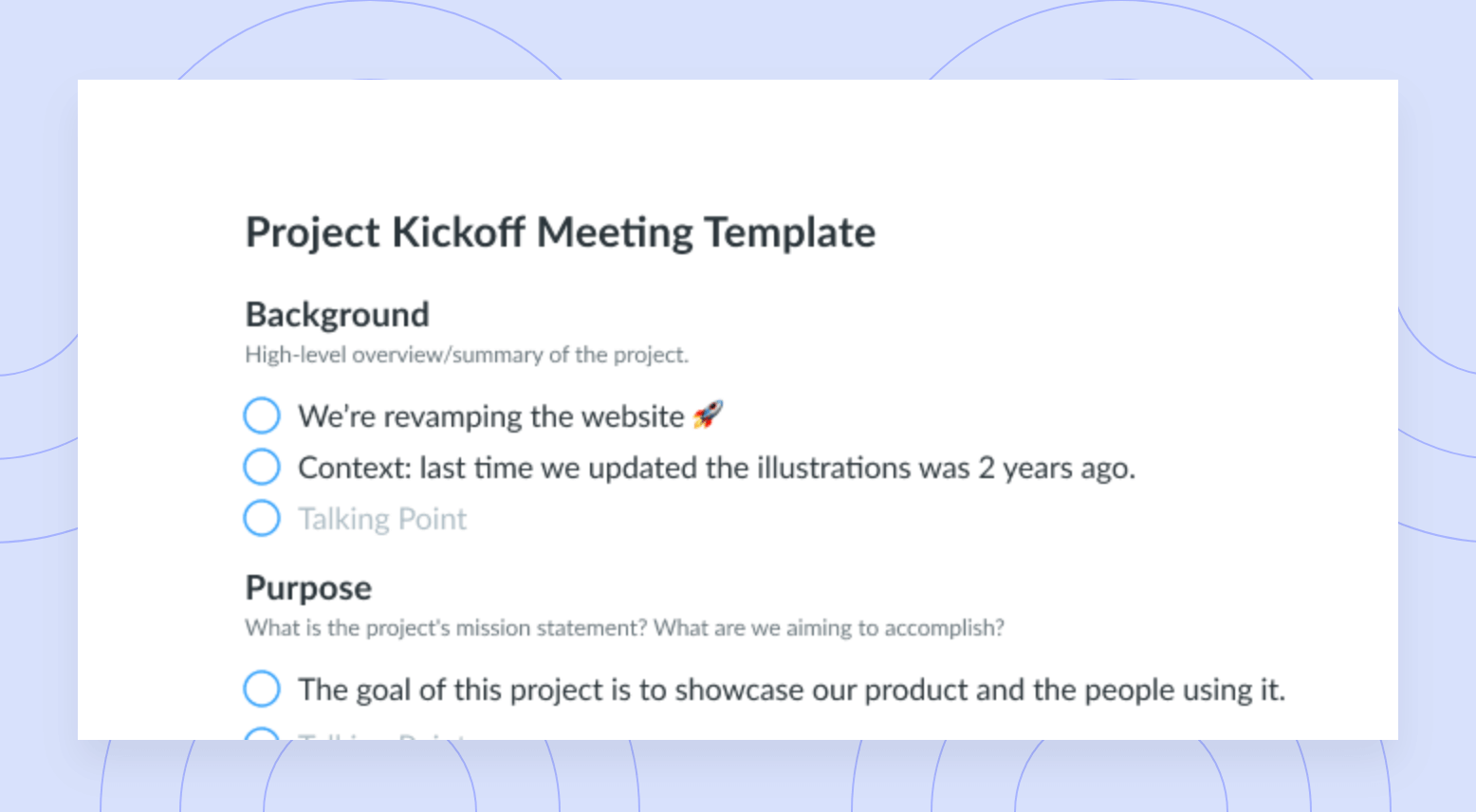
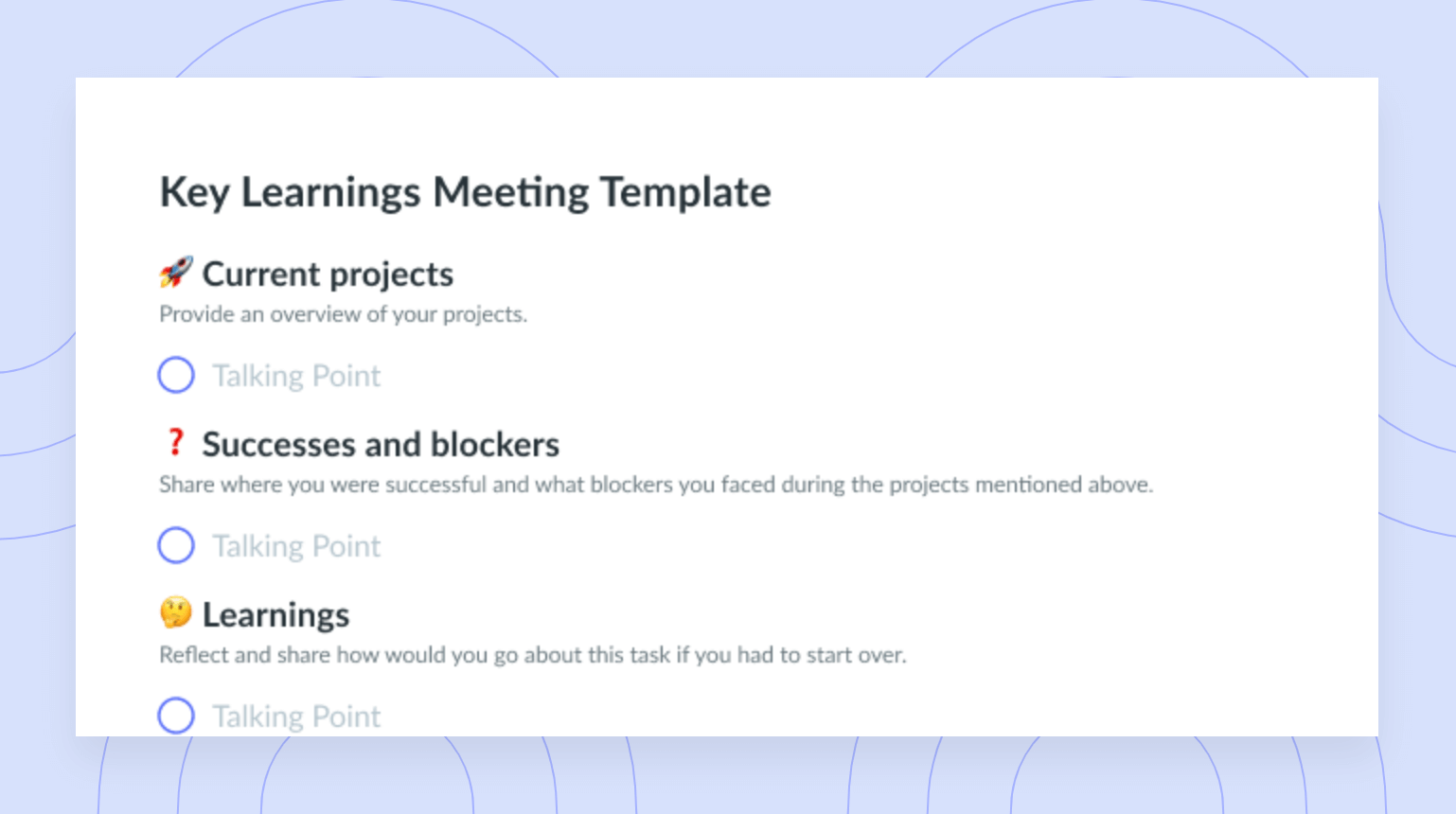
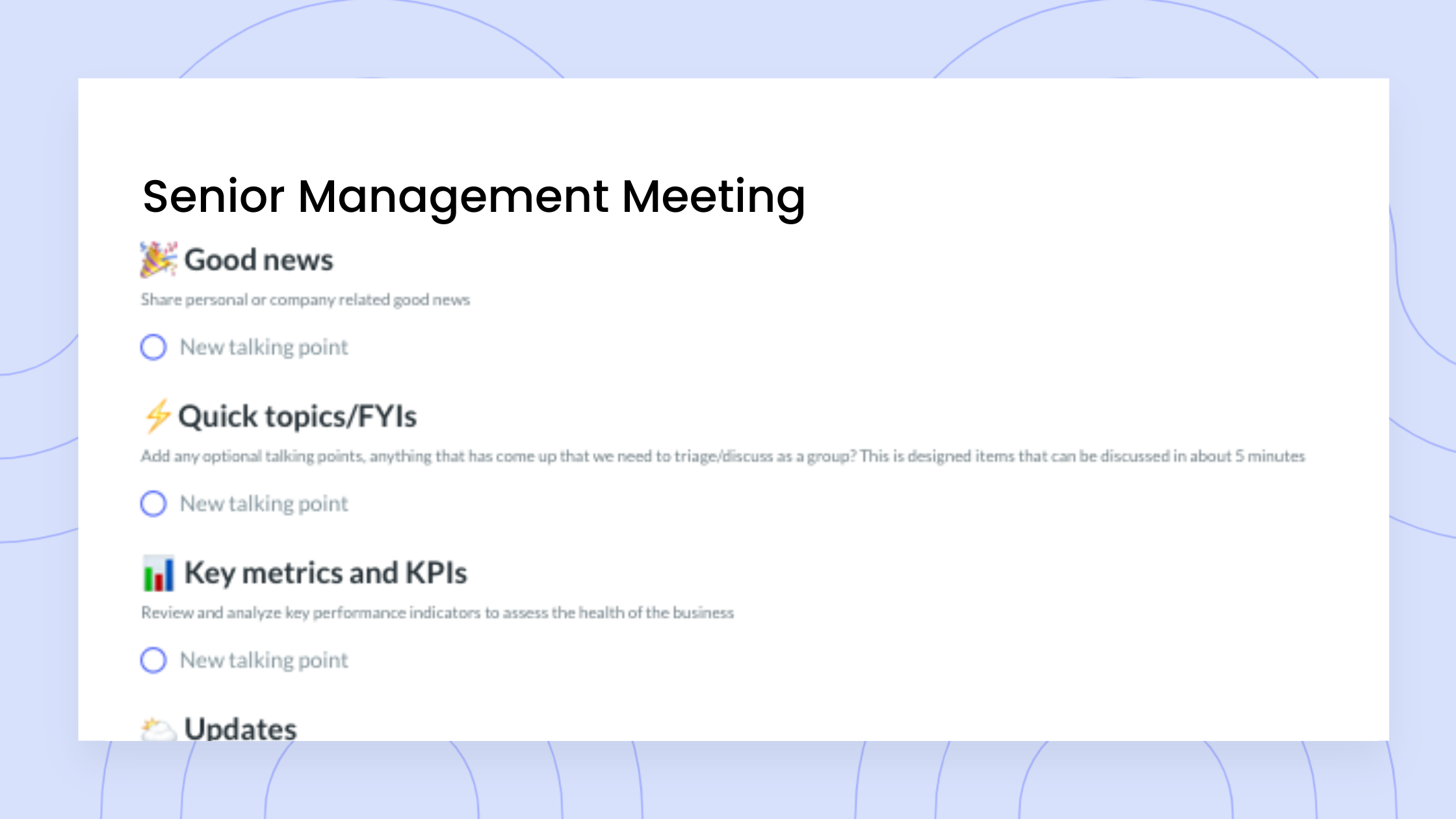
![Incoming Client Interview [Legal Clinic] Template](https://fellow.app/wp-content/uploads/2021/09/Incoming-Client-Interview-Legal-Clinic-preview.png)